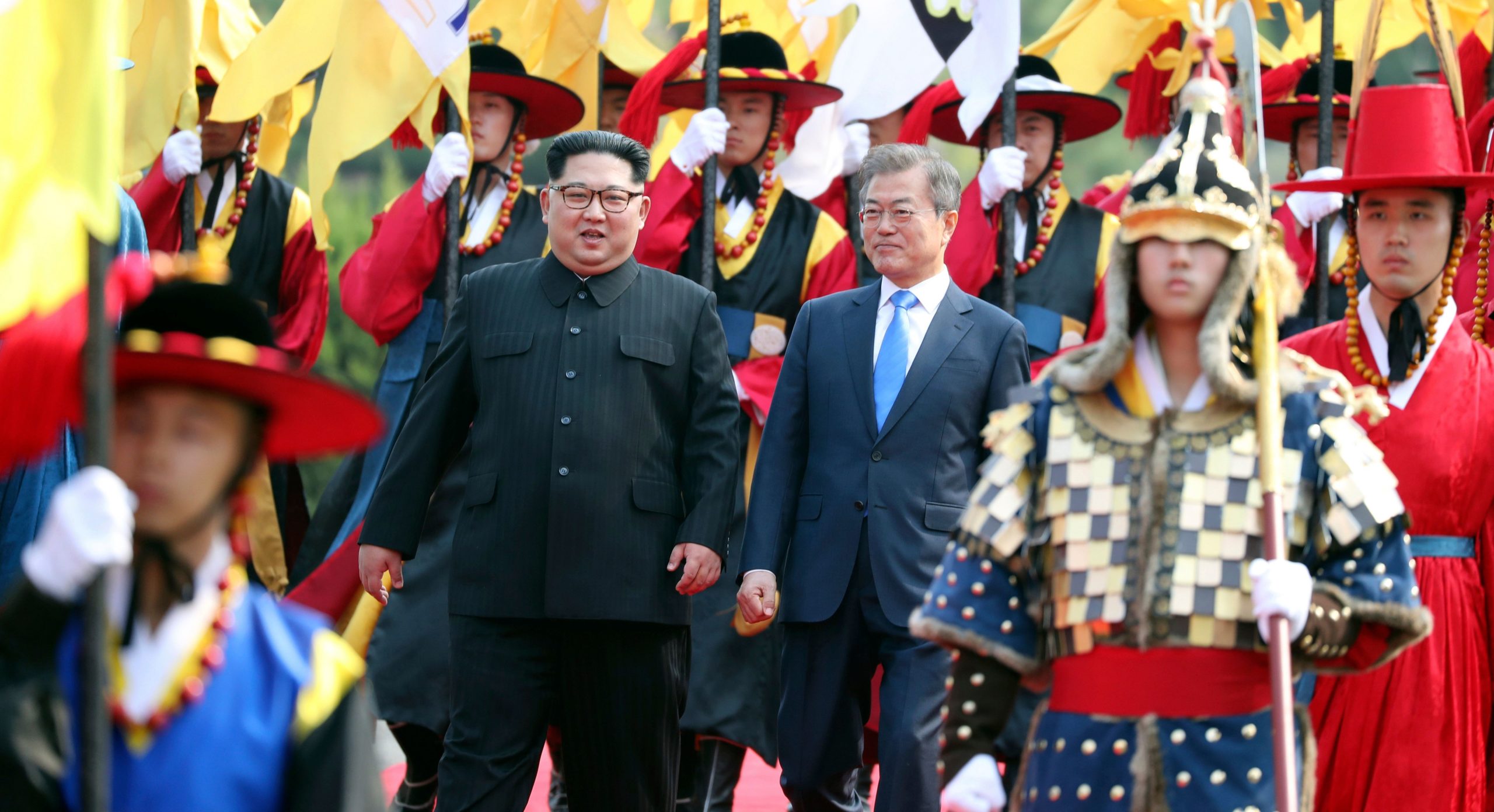A nation must think before it acts.
Descriptions of globalization quickly turn into clichés. But one of the most palpable features is that news travels across the globe in milliseconds. What happens there doesn’t just impact us here—we also learn about events right away, and so on, and so forth.
That may be true, but it’s often striking how different news environments look in different parts of the world. Here in Seoul, the summit between North Korea’s Kim Jong-un and South Korea’s Moon Jae-in has spun around the news cycle for weeks. Here and there, the streets were aligned with flags and banners celebrating the summit as an historic moment for peace in the run-up to the summit. The city of Seoul placed posters at metro stations, such as these below, expressing hope for a future of inter-Korean peace and unity.

“[We] wish for success in the South-North Summit.” Photo: Benjamin Katzeff Silberstein.

“[With hopes for] the South-North Summit linking together another miracle,” with a mock train ticket from Seoul to Pyongyang, showing further transfers possible to Vladivostok, Ulan Bator, Irkutsk, Moscow and Warsaw. Photo: Benjamin Katzeff Silberstein.
The news on September 16 that a significant delegation of private business people would accompany Moon to Pyongyang, mainly from South Korea’s major conglomerates, dominated the media cycle. All in all, Moon’s entourage is larger than those of both previous inter-Korean summits in 2000 and 2007. Because of current sanctions and U.S.-North Korea tensions, everyone knows that not much can happen in the near future in terms of South Korean investment in the North. But the hope is clear that someday, as soon as possible, South Korean conglomerates can go north and manufacture TVs and cars, and not least, help reconstruct North Korea’s dilapidated railroads. The economic delegation consisted of people like Oh Young-sik, president of South Korea’s national railway company Korail, and Ahn Young-bae, head of South Korea’s Korea Tourism Organization. An unusual number of departures for North Korea’s coastal town of Wonsan from Pyongyang’s Sunan airport on Tuesday suggested that perhaps the South Korean business delegation received a tour of what Kim Jong-un hopes will one day be a prime resort for South Korean tourists.
There is much to say about this. From a domestic politics perspective, it’s remarkable and somewhat surreal to see Samsung’s Lee Jae-yong sitting comfortably in a passenger seat en route to Pyongyang, only months after he was released from jail after the court drastically shortened his sentence for corruption. President Moon came into office promising to take on the financial and political power of the conglomerates once and for all, and introduce reforms to temper their overwhelming dominance. But his rhetoric has softened considerably, and major economic reforms are markedly absent in this realm. What Moon has done, such as raising the minimum wage, has earned him considerable backlash. His polling numbers have fallen drastically over the past few months, albeit from a high level, mainly due to an economic slump at least partially blamed on the minimum wage reform.
Moon badly needed a public win. The TV images currently broadcasted live in South Korea, of Moon and Kim smiling and waving enthusiastically at the crowds lined up in Pyongyang, will go a long way, but it’s not enough. South Korean opposition parties have warned this shouldn’t be “a summit for the sake of a summit” (Joongang Ilbo, 9/18/2018, p. 2), and cautioned Moon to keep the aim clear at concrete results for denuclearization. Moon’s own chief of staff, Im Jong-sok, has cautioned against hoping too much for the summit in terms of denuclearization progress. Trust-building for peace is all fine and good, but in terms of political reality, they may not mean that much. Expectations are heavy on Moon to come away with something concrete that can break the deadlock between North Korea and the U.S., whatever that might be.
In much of the run-up to the summit, the international realm and the U.S. role in the process often appeared to be a dark cloud looming over the nationalist festivities of unity. The alliance between South Korea and the United States may be firm for now, and Moon has very skillfully maneuvered between the inter-Korean warming of ties and the alliance with the U.S. Nevertheless, it’s abundantly clear that South Korea and the U.S. simply value different things in this process. While the Trump administration is an increasingly lonely voice in calling for vigilance on UN sanctions against North Korea, Moon brought an entourage of South Korean business leaders to the North to talk about future possibilities for collaboration and revenue. There is often fairly vague talk about a “wedge” that North Korea wants to drive between South Korea and the U.S. In a sense, it already exists because the current South Korean government and the U.S. simply have different aims and hopes in the current process. There’s an ample number of flags and banners adorning the streets of Seoul right now to prove it.




